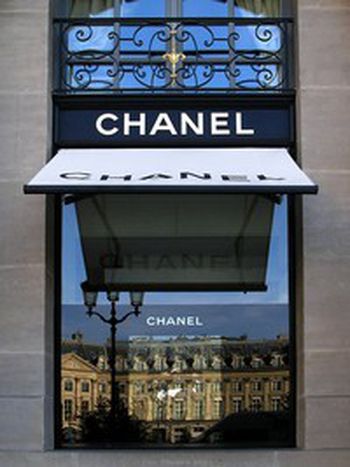
Street Style
Published on
Translation by:
 sally harbinson
sally harbinson
Chanel said there there would be no fashion if it was on the street - was she right?
According to Katelijne Duerinck, the department head at Levi’s, Benelux, “there are three markets”: “people who shop at Carrefour supermarkets, those who choose H&M and those who prefer brand names and are prepared to pay more for better quality.” Little by little, the second category is starting to gain ground: Zara, the leading brand of Spanish textile giant Inditex, has 871 shops and had a 2004 turnover of €3,819.6m (up 11.9% on the previous year). Swedish group H&M is doing even better, having opened 1,193 sales outlets since its launch in 1947. The result was a €7.700m turnover in 2005 (up 14%). In a sector which is losing momentum and being hit by Chinese competition, such performances are surprising.
Cheap and trendy
So what is the secret of these “fast-food chains of the clothes world”? After the low cost revolutions in transport and food, this process is now being applied to fashion. “In H&M, there is a good choice and lower prices,” says Mamitsho, a 25 year old student. Stéphane, a 30 year old journalist, adores “finding lookalikes of major brands without breaking the bank.”
The main advantage of these fashion giants is their prices. However, these shops also offer a huge range of choice. In H&M, you can find clothes for babies, teenagers and larger sizes as well as a maternity range, not to mention accessories and makeup. But Zara is the champion in innovation. Its individual commercial model means that all stages of the process (design, production and distribution) are carried out by the group itself, based in La Coruna.
Consequently, delays are reduced, flexibility is increased and Zara can put forward new models very quickly. While it takes nearly nine months in the fashion industry to get a collection in the shops, Zara needs just two to three weeks. The result is that there is no stockpile and few unsold goods in case there is an error in judging trends. Another distinctive point is the company’s “no marketing” policy. Brands spend on average 3.5 per cent of their turnovers on advertising campaigns while Inditex allocates just 0.3 per cent.
Both companies’ collections are inspired by the catwalks. Each has an armada of designers at their service (200 at Zara and around 100 for H&M). And H&M has launched an assault on the ultra selective world of haute couture. In 2004, the group hired Karl Lagerfeld to design a range of clothes. The response was unprecedented: fashionistas queued for hours to buy the coveted pieces! The same thing happened last November with the launch of Stella McCartney’s designs.
Profitable and responsible?
“We have the same collections in every country,” said Marianne Nerinckx, an employee at H&M Belgium. This may seem surprising for a brand which has outlets in 22 countries and which intends to soon open branches in Dubai and Kuwait. If we are to believe Zara’s website, “there are no borders which forbid a single fashion culture to be shared!” However, some countries are better customers than others. H&M sells most in Germany, Sweden and the UK. Zara has extended its influence to South America, the Middle East and Africa.
Like other multinational companies, H&M and Zara both play the social responsibility card to improve their image. They have set ambitious targets: since 2002, Inditex, Zara’s parent company, has developed a sustainable development memoir, while the H&M group participates in numerous humanitarian projects: supporting UNICEF in Cambodia, helping anti-drugs organisations (which is why the company terminated Kate Moss’ contract when it emerged that she had taken cocaine), respecting the environment (using the EU’s ecological seal of approval) and helping young people in Bangladesh. We can only hope that these good practices are also implemented in their factories which have been relocated in Asia: 30 per cent of Zara’s and 60 per cent of H&M’s.
Translated from H&M et Zara : des podiums à la rue


